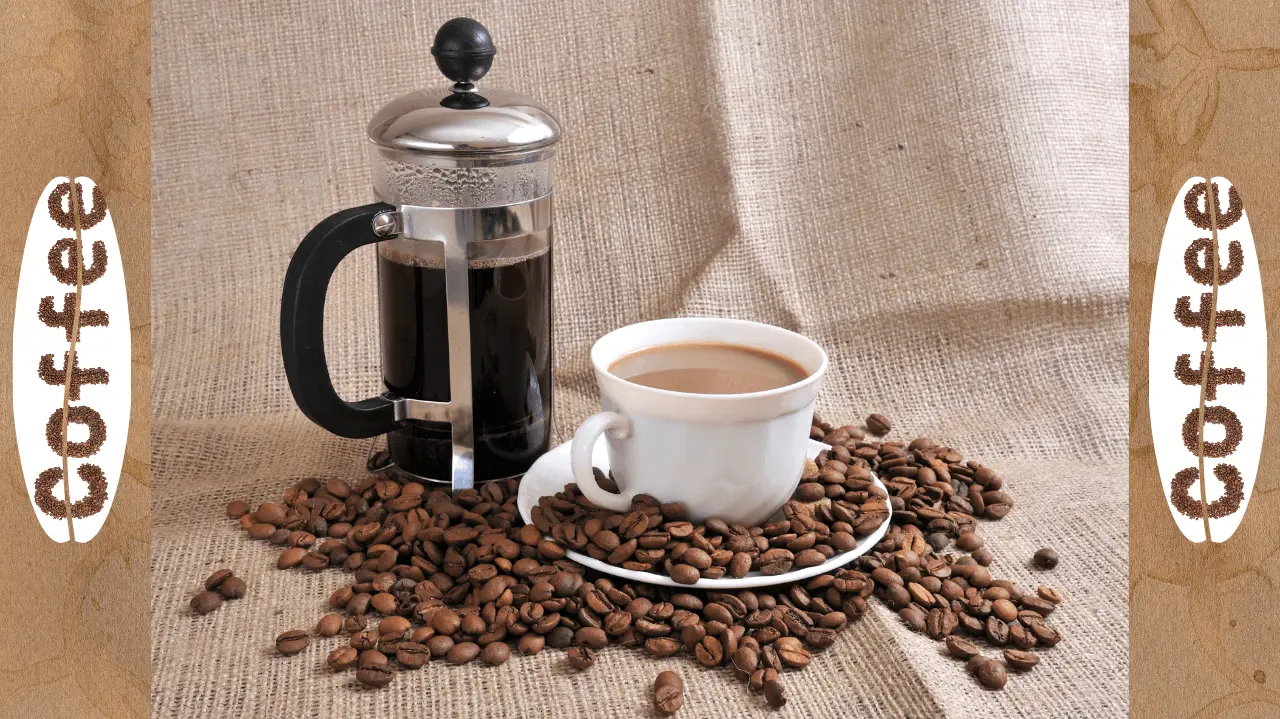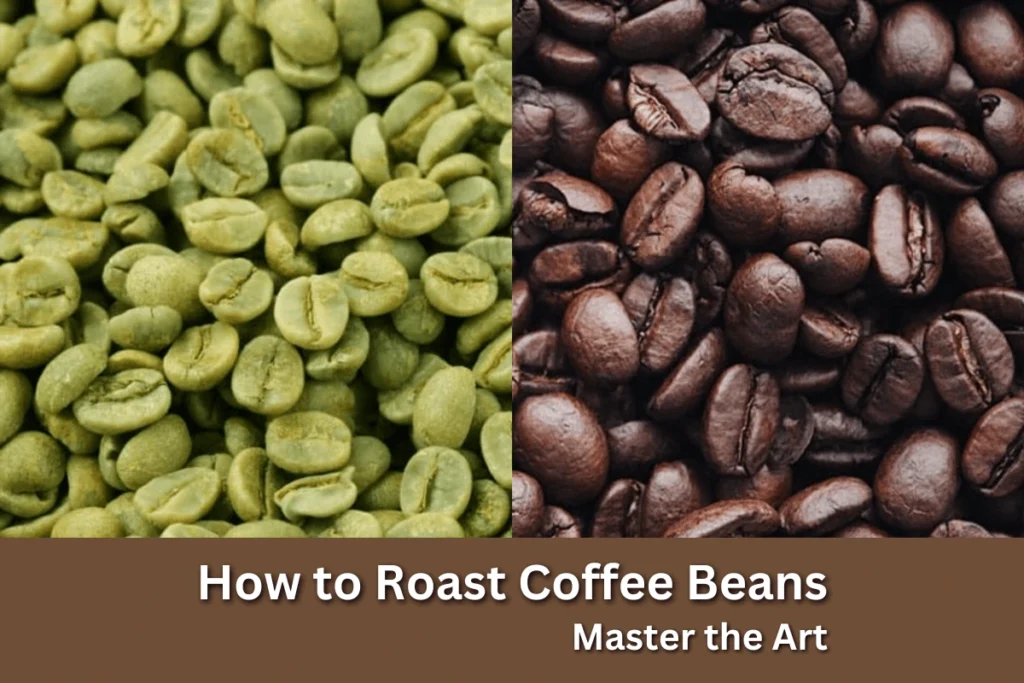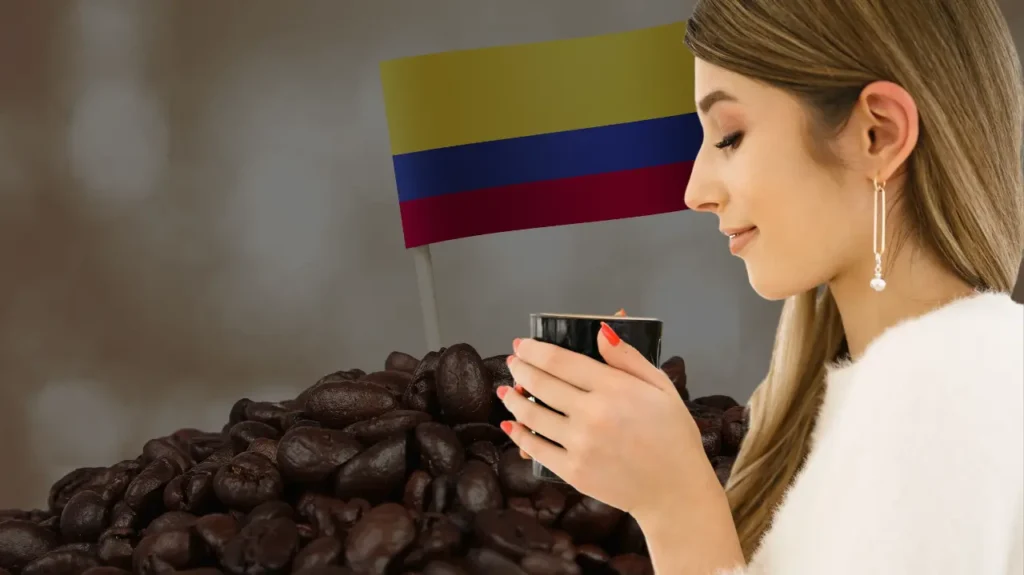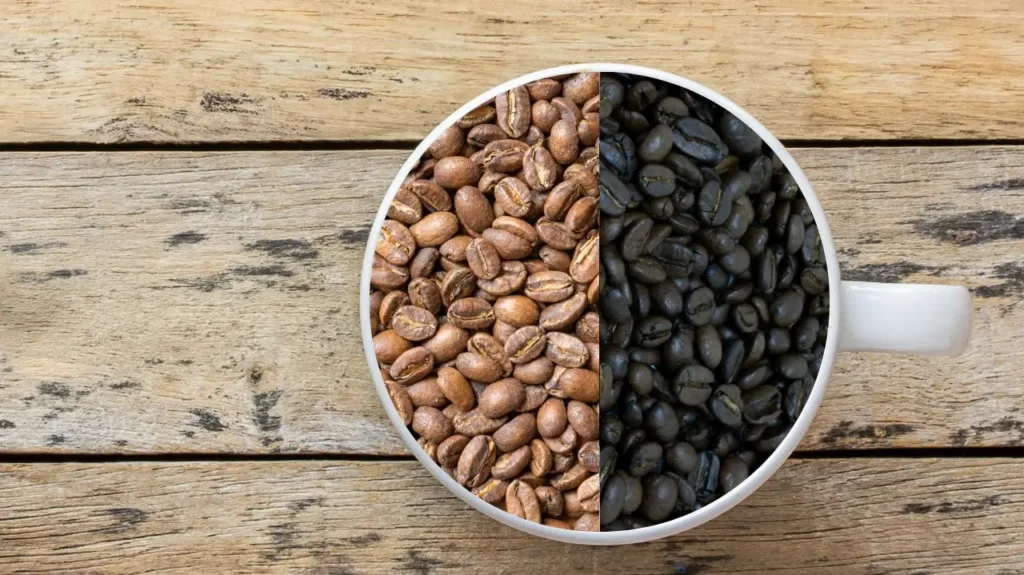Ever sipped a coffee so bold it felt like a warm hug? That’s a French roast. Forget subtlety; this dark roast packs a smoky, intense punch loved from Paris to Portland.
But what is french roast coffee, exactly? Spoiler: It’s not about geography.
Here’s the deal. French roast is all about the roast level. Beans get heated until they’re nearly black, shiny, and bursting with deep, caramelized flavours.
Coffee fans in Europe and America’s West Coast swear by its strong, full-bodied taste. Studies even show many prefer dark roasts for their boldness.
Whether you’re a coffee newbie or a seasoned pro, this guide spills the beans. We’ll crack open its roasting secrets, flavour twists, and how to brew it right.
What Is French Roast Coffee?
French roast coffee isn’t just a dark bean; it’s a craft. Think of it as the espresso of roasts: daring, intense, and unapologetically bold. But what truly sets it apart?
Two things: a roasting process that borders on art and a name steeped in European coffee culture. Let’s unravel both.
The Roasting Process
French roast coffee earns its boldness through a fiery transformation. Green coffee beans, raw, grassy, and pale, are thrust into roasters heated to 450-455°F.
The beans morph through stages: first yellowing, then tanning, and finally reaching a deep, almost blackened brown. The critical moment? The “second crack.”
Picture a rapid series of snaps, like rice crisping in a pan. This sound signals the beans’ cell walls fracturing, releasing trapped oils that coat the surface.
That glossy, oily sheen? That’s the French roast’s fingerprint.
But this isn’t a gentle toast. The extended roast caramelizes sugars, smothering the bean’s original flavours (like fruity or floral hints) under smoke and dark chocolate layers.
Here’s the kicker: caffeine dwindles. As heat breaks down molecules, French roasts induce less caffeine than lighter roasts (Aerial Resupply Coffee).
For more on caffeine variations, see how much caffeine is in Vietnamese coffee.
The Term “French Roast”
The name is a historical hiccup. In 19th-century Europe, dark roasts became the rage in Parisian cafés.
Roasters slapped “French” on the label to cash in on the trend, not because the beans hailed from France.
Today, it’s purely about style: any bean, Colombian, Ethiopian, or blend can become French roast if roasted until nearly black and oily.
Italians later one-upped the darkness with “Italian roast,” but French roast remains the crowd favourite for balancing boldness and drinkability.
No passport is needed, just a roaster willing to walk the line between charred and sublime.
The Flavor Profile
French roast coffee isn’t just a drink; it’s a mood. Picture a stormy evening by a fireplace, wrapped in a leather-bound book’s aroma. That’s the vibe French roast delivers.
Its flavour isn’t subtle; it’s a full-sensory plunge into darkness, warmth, and comfort. Let’s unpack why it’s the rebel of the coffee world.
Flavor Notes
French roast tastes like the coffee version of a charred oak barrel. The first sip hits with smoky boldness, like a campfire doused in dark chocolate sauce.
Caramelized sugars from the roast add a bittersweet undertone; think burnt caramel, not candy sweetness.
Original bean flavours?
Gone. Light roasts shout, “I’m from Ethiopia!” or “Colombia!” French roast growls, “I’m roasted.”
But there’s nuance. Some roasts emphasize charred cedar or tobacco notes. Others lean into cocoa powder or toasted hazelnut. Blame the roaster’s style.
A Parisian café might highlight ashy elegance, while a Portland roaster amps up earthy grit. Either way, it’s a big flavour, no apologies.
Mouthfeel
French roast doesn’t flirt with your tongue; it moves in. The body is thick, almost chewy, like blackstrap molasses. Low Acidity gives it a slick, velvety finish.
No sharp tang, no citrusy zing. Just smooth, heavy warmth from start to swallow.
This texture is its superpower. Add milk? It hugs cream like a blanket, becoming a creamy, smoky latte.
Drink it black?
It’s a slow, syrupy sip that lingers like a good story. For those who find light roasts too “juicy” or acidic, French roast feels like a cosy armchair.
Benefits of Choosing French Roast Coffee
French roast coffee isn’t just a caffeine fix; it’s a lifestyle choice. Here’s why it’s a go-to for those craving intensity without compromise:
| Benefit | Description |
| Bold Flavor | Ideal for those who love a strong, pronounced taste, satisfying and intense. |
| Low Acidity | It is easier on the stomach and gentler for those sensitive to acidic foods and drinks. |
| Versatility | Suitable for various brewing methods like drip, French press, espresso, and cold brew. |
| Long Shelf Life | Dark roasts have reduced moisture, killing more bacteria and extending freshness. |
| Great for Flavoring | the Bold base stands up to milk, sugar, or flavoured syrups, perfect for lattes. |
| Antioxidant Properties | Some studies suggest higher antioxidant levels, though health benefits vary. |
| Caffeine Content | Slightly less caffeine by weight than lighter roasts, but still robust in taste. |
Why These Benefits Matter
Bold Flavor isn’t just strong; it’s layered. The extended roast creates Maillard reaction flavours, like seared steak or toasted bread, giving depth that light roasts can’t match.
It’s for those who want Coffee to taste like Coffee.
Low Acidity isn’t just gentle; it’s a game-changer for acid reflux sufferers. Roasting breaks down chlorogenic acids, the culprits behind stomach irritation.
Imagine swapping heartburn for a smooth, smoky sip.
Versatility means freedom. French roast bends to your mood: bold espresso shots, creamy cold brews, or a French press paired with dark chocolate.
It’s forgiving, too, slightly overbrew it, and the roast’s intensity hides mistakes.
Long Shelf Life isn’t marketing fluff. Oily, dark beans resist staleness better than dry, light roasts. Those oils act like a shield, locking in flavour for weeks.
Perfect for casual drinkers who don’t finish a bag quickly.
Great for Flavoring isn’t just about lattes. Try it with cinnamon, cardamom, or even chilli powder.
The roast’s smokiness dances with spices instead of drowning them out.
Antioxidant Properties come with a caveat. Dark roasts have more melanoidins and antioxidants formed during roasting, but their health impact is debated.
Consider it a bonus, not a vitamin.
Caffeine Content confuses many. Yes, lighter roasts have marginally more caffeine per scoop.
But French roast’s boldness tricks your brain into feeling a “stronger” kick, perfect for placebo-sensitive souls.
Brewing French Roast Coffee
French roast coffee’s bold personality demands brewing methods that tame its intensity or let it shine.
Below, we explore four key techniques to craft the perfect cup: no fluff, no repetition, just pure coffee wisdom.
Drip Coffee Maker
The drip method softens French roast’s edges while keeping its bold core. Start with a medium-coarse grind (raw sugar granules) to balance extraction.
Use a 1:15 coffee-to-water ratio, 20 grams of Coffee for 300 millilitres of filtered water heated to 195°F (91°C). Pour slowly to saturate grounds evenly, avoiding bitter over-extraction.
The paper filter traps excess oils, creating a clean yet robust brew for daily sipping. This method slightly mutes the roast’s smokiness, making it approachable for newcomers to dark roasts.
French Press
French press brewing embraces French roast’s oily, full-bodied nature. Opt for a coarse grind (like flaky sea salt) and a 1:16 ratio of 30 grams of Coffee to 480 millilitres of water at 200°F (93°C).
After pouring, stir gently to ensure all grounds are soaked, then steep for 4 minutes. Plunge slowly to keep sediment at bay.
The metal mesh allows oils to pass through, amplifying the Coffee’s thick, smoky texture.
This method is perfect for those who want to feel the Coffee’s weight on their tongue, like drinking liquid velvet with a campfire finish.
Espresso Machine
Transform French roast into a concentrated powerhouse with an espresso machine.
A fine grind (powdered sugar consistency) and a 1:2 ratio (18 grams of Coffee yielding 36 grams of espresso) are critical.
Tamp firmly to create resistance, then extract for 25-30 seconds. The high pressure pulls out bold, bittersweet notes, charred chocolate and toasted nuts while minimizing Acidity.
Use this shot as a base for lattes; the roast’s intensity holds its own against steamed milk. Over-extraction risks ashy bitterness, so time it like a ticking bomb.
Cold Brew
Cold brew tames French roast’s fire into a smooth, chocolatey sip. Use a coarse grind (breadcrumb texture) and a 1:8 ratio of 100 grams of Coffee to 800 millilitres of cold, filtered water.
Steep for 18-24 hours at room temperature, then strain twice to remove grit. The slow, cold extraction mutes smoke and highlights caramel sweetness, making it ideal for sensitive stomachs or hot days.
Serve over ice with a splash of almond milk for a creamy, low-acid treat. Learn more about does iced coffee have caffeine.
Unlike iced Coffee, cold brew skips bitterness entirely, French roast’s hidden softer side.
Common Misconceptions and Clarifications
French roast coffee suffers from myths that blur its true identity. Let’s set the record straight, one sip at a time.
Misconception 1: French Roast Is Only for French Press
The name fools many. “French roast” refers to the roast level, not the brewing tool.
While the French press complements its oily body, this Coffee thrives in espresso machines, drip makers, and even cold brew setups.
Imagine using it for a smoky latte or a velvety cold brew. The roast’s versatility is its superpower, bending to any method you choose.
Misconception 2: French Roast Is Burnt
Yes, it’s dark. No, it’s not a charcoal briquette. Skilled roasters walk a tightrope, caramelizing sugars without crossing into burnt territory.
The smokiness you taste? That’s Maillard reaction magic, like searing a steak to lock in flavour.
Poor roasting can lead to ashy bitterness, but a well-crafted French roast balances charred sweetness with depth.
It’s grilled, not incinerated. For coffee safety tips, read can you put hot coffee in a glass cup.
Misconception 3: All Dark Roasts Are the Same
Dark roast isn’t a monolith. French roast sits between Vienna (lighter dark) and Italian (darker, oilier) roasts.
Italian roast goes further, often tasting bittersweet with a thinner body. Spanish roast? That’s the darkest, almost tar-like.
French roast strikes a middle ground, smoky but smooth, bold but balanced. Knowing these nuances lets you pick the roast that matches your mood: a gentle smoulder (French) or a bonfire (Italian).
Popular Culture and Consumer Preferences
French roast coffee isn’t just a drink; it’s a statement. Ordering a French roast signals a character’s refined palate or no-nonsense attitude in films and TV.
Picture a detective in a noir movie sipping it black at a dimly lit diner or a CEO in a drama demanding it during a high-stakes meeting.
This roast’s boldness mirrors bold personalities, cementing its reputation as the Coffee of choice for those who crave intensity.
Coffee giants like Starbucks have turned French roast into a household name, especially in the U.S. and Europe.
Their dark, oily beans dominate supermarket shelves, appealing to drinkers who equate dark roasts with premium quality (Colipse).
But it’s not just marketing; celebrities and fictional baristas often name-drop French roasts as shorthands for “serious coffee.”
Think of a chef in a cooking show praising its smoky depth or a coffee influencer touting it as the ultimate espresso base.
Geographically, French roast thrives where bold flavours reign. On America’s West Coast, where third-wave coffee culture blends with a love for robust profiles, it’s a staple.
Its deep, low-acid taste in Europe, particularly France and Italy, aligns with centuries-old espresso traditions (Sagebrush).
Even as lighter roasts gain trendy traction, French roast holds its ground, a timeless choice for purists and everyday drinkers alike.
Beyond cafés, French roast sneaks into lifestyle branding. Instagram feeds flaunt its sleek, oily beans in minimalist kitchens, while cookbooks pair it with dark chocolate or bourbon.
Its cultural clout lies in duality: approachable enough for a diner mug yet sophisticated enough for a ceramic pour-over dripper.
Choosing the Best French Roast Coffee
Picking the perfect French roast means looking beyond the dark, shiny beans. Focus on three pillars: bean quality, roast freshness, and roaster integrity.
Arabica beans are non-negotiable; they add natural sweetness to balance the roast’s smoky edge. Avoid Robusta-heavy blends; their bitterness clashes with French roast’s depth.
Always check the roast date. Beans peak within 2-4 weeks, so skip vague “best by” labels for bags stamped with a “roasted on” date.
Trustworthy roasters matter. Brands like San Francisco Bay Coffee use Rainforest Alliance-certified beans, slow-roasted for caramelized sweetness without ash.
Peet’s Coffee, a dark roast pioneer since 1966, delivers smoky richness with a velvety finish. Starbucks offers a widely available, budget-friendly, charred and bold option, ideal for milk-based drinks.
Smaller roasters often shine, too. Look for terms like “air-cooled” or “small-batch” to avoid burnt aftertastes.
| Brand | Why It Stands Out |
| San Francisco Bay Coffee | Eco-friendly packaging, caramelized flavors, Rainforest Alliance-certified beans. |
| Peet’s Coffee | has had Small-batch consistency, smoky depth, and velvety texture since 1966. |
| Starbucks | Bold, accessible, and tailored for lattes or black coffee drinkers. |
Store beans in an airtight container, away from heat and light. Freeze only if vacuum-sealed; moisture ruins the oils that define the French roast’s body.
Grind beans fresh; pre-ground loses oils quickly, muting flavour. Need grinding tips? See how long to grind coffee beans. Taste-test before committing.
Some French roasts lean chocolatey, others smoky. Your perfect bag should thrill, not overwhelm.
Watch for traps. Excessively oily beans might signal staleness, not freshness. And “dark roast” labels don’t guarantee quality; some brands over-roast to mask cheap beans.
Prioritize roasters that disclose origins and methods.
Frequently Asked Questions
Even after exploring French roast’s bold flavours and brewing secrets, you might still wonder: Is this Coffee right for me? Let’s tackle lingering doubts head-on.
What Foods Pair Well with French Roast Coffee?
French roast’s boldness loves company. Dark chocolate (70% cocoa or higher) mirrors its smoky depth, creating a bittersweet duet.
Caramel desserts, think flan or crème brûlée, highlight its caramelized sugars. Savoury pairings? Try aged cheeses like Gouda or smoked meats.
The roast’s intensity stands up to rich flavours without backing down.
Is French Roast Stronger in Caffeine?
No, it’s the opposite. Longer roasting breaks down caffeine molecules, so French roasts have less caffeine per bean than light roasts (Kicking Horse Coffee).
Compare with does blonde coffee have more caffeine. But here’s the twist: its bold taste tricks your brain into feeling a “stronger” kick. It’s a placebo effect with a smoky finish.
Can I Use French Roast for Espresso?
Absolutely. French roast’s low Acidity and oily body make it espresso-friendly. For espresso alternatives, try how to make coffee without electricity.
The high-pressure extracts bold, chocolatey notes, perfect for lattes or mochas. But purists might miss origin flavours (like fruity Ethiopian notes), as the roast dominates.
Want espresso that shouts “roast”? French roast is your bean.
Does French Roast Taste Burnt to Everyone?
Not if it’s well-roasted. Cheap brands might char beans, but skilled roasters caramelize sugars without crossing into ash.
The smokiness you taste is intentional, like charred edges on a grilled steak. Personal taste plays a role: some crave that campfire vibe; others call it bitter.
Try multiple roasters to find your match.
How Should I Store French Roast Beans?
Keep them airtight and away from light/heat. Glass jars with rubber seals work best. Avoid freezing unless beans are vacuum-sealed; moisture kills the oils that give French roast its velvety body.
For post-surgery guidelines, see can I drink coffee after surgery. Grind just before brewing to preserve those smoky, caramelized notes.
Why Choose French Roast Over Other Dark Roasts?
It’s the Goldilocks of dark roasts, darker than Vienna, lighter than Italian. French roast balances smoke and sweetness, making it versatile for black Coffee or creamy drinks.
Italian roast leans bitter; Spanish roast tastes tar-like. French? Just right.
Conclusion
French roast coffee isn’t just a drink; it’s an experience. Think of it like a weathered leather jacket: rugged, timeless, and unafraid to make a statement.
ts deep, smoky flavours and velvety texture aren’t for the faint-hearted, but for those who crave Coffee with character, it’s a revelation.
This guide has walked you through its fiery roasting process, decoded its complex flavour profile (hello, dark chocolate and caramelized sugar!), and even spilt secrets on brewing it right.
You’ve learned why it’s gentler on sensitive stomachs, how to spot quality beans, and why it’s a chameleon in your kitchen, equally at home in an espresso shot or a creamy cold brew.
Now that you know the facts, it’s time to trust your taste buds.




